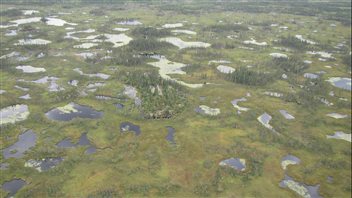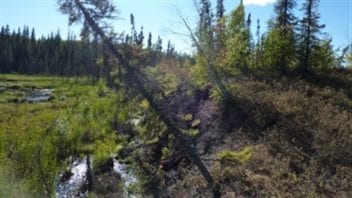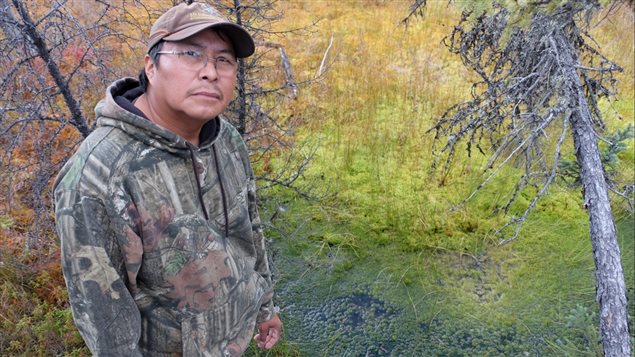Arctic permafrost is warming and, as it does so, the organic matter it contains decays and emits greenhouse gasses which contribute to climate change. Unchecked, this melting of frozen ground is projected by scientists to cost the world an additional $43 trillion US ($57 Cdn) in economic impacts by the end of the twenty-second century.

‘We really have to start addressing climate change now’
“This is just one more factor that says that we really have to start addressing climate change now,” says Kevin Schaefer, research scientist at the University of Colorado, U.S. and co-author of the study. “We really have to reduce our fossil fuel emissions.”
ListenTrees already toppling
Over half of Canada’s landmass is underlain by permafrost. It is already thawing in some southernmost regions like that skirting Hudson Bay in Canada. For example, trees are toppling and hunters have to tread carefully on sinking ground in Jean Marie River in Canada’s Northwest Territories. Aboriginal people living there are afraid they will have trouble obtaining their traditional foods.
“Pretty much have to be careful of where you walk, and most of the times where there’s permafrost, the ground is very soft,” Jonas Sanguez told CBC News.
Melting permafrost could raise temperatures by 0.2 C
Emissions from melted permafrost could raise global temperatures by 0.2 C, according to this study from the universities of Colorado and Cambridge, published in the journal Nature Climate Change. That’s 10 per cent of the goal countries have set of not allowing temperatures to rise 2 C above pre-industrial levels.

‘Yet another point of urgency’
World temperatures have already gone up 0.9 per cent. “That means that in order to hit that (2 C) target, we have to reduce our fossil fuel emissions even more than what we anticipate right now,” says Schaefer.
“Our hope is that the negotiators of the climate change treaty, when they meet in Paris later this year, take this as yet another factor, yet another point of urgency to actually come to an agreement on a global climate change treaty,” he adds.
It’s ‘not jobs versus climate’
“Addressing climate change is not man versus the environment, not the economy versus the environment, or jobs versus climate. It is possible to stop climate change, to reduce emissions, and grow the economy at the same time,” emphasizes Schaefer.







For reasons beyond our control, and for an undetermined period of time, our comment section is now closed. However, our social networks remain open to your contributions.